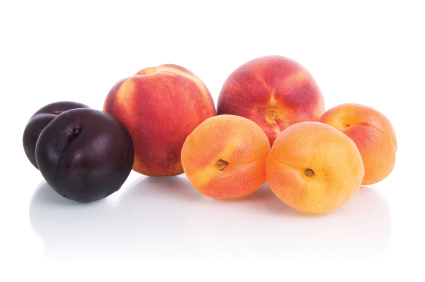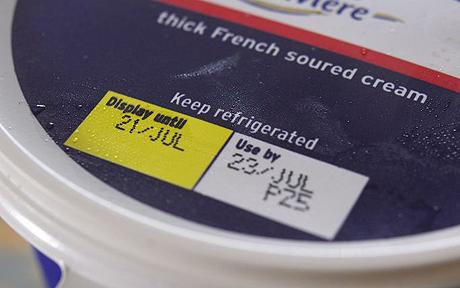Archive for January, 2011
Disaster Preparedness Brings Peace of Mind

As the New Year begins, the Red Cross is encouraging families to be prepared. Knowing what emergencies are most likely for the areas where they live, work, learn and play, and taking steps to plan for them will bring families a measure of peace. Emergencies to think about can include wildfire, tornado, hurricane, earthquake or floods, but families should also plan for unusually heavy snowfall and ice storms that can cause power outages and disrupt utilities and other services.
- Grab-and-Go: These are kits or bags that contain essential and useful items in case you are forced to leave your home or shelter in place. Check out www.redcross.org for a list of items that go into an emergency preparedness kit and to watch a really cool video about being prepared.
- Gathering the following items can bring you some peace of mind now: Three-day supply of nonperishable food and water—one gallon per person per day for drinking and hygiene purposes; battery-powered or hand-crank radio, preferably NOAA weather radio; flashlight and extra batteries; first-aid kit, medications and medical items; extra cash; and copies of important documents such as proof of address, deed or lease to home, passports, birth certificates and insurance policies.
- Plan. Plan. Plan. Talk with family and household members about what they should do during a flood, earthquake, wildfire, snow storm or ice storm. Plan what to do if members are separated and choose two places to meet— one outside the home and another outside the neighborhood in case of evacuation.
- Choose an out-of-area emergency contact person. All household members should have this person’s phone number and email address. It may be easier to call long distance or text if local phone lines are out of service.
- Tell everyone in the household where emergency information and supplies are kept.
- Practice evacuating the home twice a year. Drive the planned evacuation route and plot alternate routes on a map in case main roads are impassable.
- Plan ahead for pets. In case of evacuation, make arrangements for animals. Keep a phone list of “pet friendly” motels or hotels, animal shelters and fair grounds that are along the evacuation routes.
- Be informed. Know the risks in neighborhoods where family members live, work, learn and play.
- Assemble information about what to do in case a flood, earthquake or wildfire occurs. Remember that emergencies like fires and blackouts can happen anywhere, so everyone should be prepared for them.
- Find out how to receive information from local officials in the event of an emergency. Many cities conduct CERT programs (Community Emergency Response Team) that trains residents in all aspects of disaster preparedness. They also hold first aid and CPR/ AED training events, since during a disaster first responders may not be as available. Contact the local Red Cross chapter for training.
For more information on disaster preparedness and emergency response, visit www.redcross.org. For information about CERT training classes contact your local police or fire department.
![]() Photo credit: Burke County Red Cross
Photo credit: Burke County Red Cross
Fabulous Fungi

Here’s a riddle for you: What flourishes without light, doesn’t use flowers or seeds to grow and is so diverse it can even be grown in your hall closet?
Its mushrooms of course!
Mushrooms are unique because they are not plants at all – they are fungi. They reproduce with spores not seeds and they don’t contain any chlorophyll or go through photosynthesis like regular plants. That’s why they can grow in cool, damp, dark places instead of warm, sunny ones.
The nutrients mushrooms need to grow come from a growing medium called substrate—usually a rotting log or a “brick” of straw, rice bran or sawdust in bags. A mushroom is really the fruit of the fungus; the actual “plant” if you will, is a network of root-like threads, called the mycelium. Mushrooms reach harvestable size in several weeks and can be picked for about 15 weeks.
To begin growing your own, first decide what type of mushroom you’d like to grow, as each variety likes a certain type of growing medium. It may be a good idea to start with an easy growing variety that can be found in a kit, like the shiitake or oyster, for first-timers. Kits will come complete with the right kind of substrate for the mushroom variety, mushroom spores and growing instructions.
If you decide to grow mushrooms without the aid of a kit you’ll need to do a bit more research. First, find the right kind of growing medium for the variety you want to grow-each mushroom variety has its own preferred growing conditions. While most favor logs, straw or sawdust, some will grow on used coffee grounds and even on corncobs. The medium will then need to be sterilized with heat, tightly compacted in a bag or on a tray and then inoculated with the spawn. A word of caution here: resist the temptation to use free spawn from wild mushrooms; purchase good healthy spawn from a reliable supplier.
Be sure to check out the growing habits of the variety you decide to grow so you know how and where to place your growing container. Some mushrooms grow vertically, as they would on a rotting log, and hanging them would be an ideal solution. Others grow horizontally in little clusters as they would on the floor of a dark, clammy forest. These can be grown in a tray placed in a dark closet.
Once your mini mushroom farm is set up all you have to do is water it, set it in a dark place and keep an eye on the conditions. In about a week you’ll see the beginnings of tiny little mushrooms. Depending on the variety you should have “ready to harvest” mushrooms in another 4 to 8 weeks.
How simple is that?
Before you know it you’ll have your very own ethereal fairy-garden of perky little mushrooms.
To learn more about growing mushrooms, check out www.fungi.com and www.gmushrooms.com. The Mushroom Company at www.mushroomcompany.com is a commercial grower site, but has lots of useful information.
To read more about growing mushrooms, check out “Growing Gourmet & Medicinal Mushrooms”, by Paul Stamets.
If growing mushrooms isn’t your thing, you can still enjoy them with these simple recipes. Read the rest of the story »
Farmbrarian – Farmer/Librarian

Grab a cup of coffee, pull up a chair and flip through the pages of Farmbrarian.
The Farmbrarian blog is a website that reviews books about sustainable food. Through the site, you’ll discover many titles that may be new to you. It’s a great resource for those looking to read up on the environment and food.
Farmbrarian is a collaborative effort between Erin, an academic librarian, and David, a nutrition student and future registered dietitian. Their mutual passion for nutrition, sustainable agriculture, reading and teaching lead to the founding of this unique blog, where they meet and review books about growing and eating real food.
If you don’t have time to read as many books as you’d like about sustainability-or even discover the titles, this is the place to start.
A Life Lived in Grace

This beginning of a New Year is like a bend in a winding mountain road. It fades in my rearview as we move farther and farther from its starting point. I’ve been reflecting lately on all that can be accomplished on a small suburban homestead such as ours and feeling rather – well – contented and secure.
On just a third of an acre we are able to raise lambs and chickens to put meat in our freezer and eggs for breakfast and baking. An extra lamb we butchered is being parceled out to friends and neighbors who don’t want a whole or half lamb. And, at $9 to $15 per pound for organic lamb, I think this may turn out to be a very good thing.
The broilers we raised from day old chicks were butchered last week. Our original plan was to butcher before Christmas, but the bad weather and family obligations forced us to push back a few weeks. With the extra time on feed most of the birds were in the 7 to 8 pound range, with a few pushing over 9 pounds. At those weights the birds are too big for a family of two, so most were cut in half and a few quartered, giving us enough chicken for about 30 weeks, assuming we eat chicken once a week. Not bad, folks! Not bad at all!
The hens are laying 5 to 7 eggs a day now, not quite at full stride yet, but, that’s 3-1/2 dozen a week, enough to keep us in omelets with a few dozen left over to sell to cover feed costs.
Our berries and fruit trees are coming into their own and give us plenty of fresh seasonal fruit for eating and a little extra for freezing or canning or cooking; the garden gives us plenty of greens and root vegetables; tomatoes and cucumbers; squash and pumpkins, even with the occasional crop failure.
Thanks to some great sales in November and December our pantry is brimming with staple goods. And, the added savings from coupons meant most were “free” or nearly “free”. It’s so nice to be able to just walk over, open a cupboard and pull out what you need for an evening meal. No treks to the store after dark. No drives during inclement weather.
We picked up another load of firewood from the grandparents’ place, our second of the winter. With the colder temperatures we are burning more wood than in years past and it’s a blessing to have such a ready source. Loading split wood on a cool afternoon makes for a robust workout. I love it.
I think these reflections were brought on by a morning news story on the inflationary period coming our way. Read the rest of the story »
Pitting Stone Fruit Perfectly

Many kinds of stone fruit have flesh that clings to the pit, making for a disappointing looking fruit when the pit is removed. To pit small stone fruits like plums or peaches, cut the fruit in half lengthwise. Then use a melon baller to scoop out the pit. You’ll have perfect looking fruit for all sorts of summer recipes in no time at all.
![]() photo credit: Wilson’s Fruit
photo credit: Wilson’s Fruit
Quick Tips For Homesteaders
Keeping Whites Whiter with Lemons
Dingy napkins, linens even white socks and T’s can be brought back to their brightest white. Simply fill a large pot with water and a few slices of fresh lemon; bring the pot to a boil. Turn off the heat and add your linens or clothing items. Let soak for up to an hour; launder as you normally would. For extra brightness, line dry them on a bright sunny day.
Removing Melted Wax
Candlelight may be romantic, but there’s nothing sexy about prying melted wax out of a candleholder. To remove wax easily, place holders in the freezer for a few hours. The wax should shrink enough that the spent candle slips out easily.
Storing Candles
We all love the glow of a candle lit room on a cold winter’s day. But, when weather is warm and days are long candles are not needed as much. To store candles and keep their true color, wrap in tissue paper and store in a dark place. To keep candles from warping make sure their storage place is cool.
Freshening up potted plants
Potted plants are a great way to bring the outside in during long winter months, but with the dry air of a heated home the topsoil can dry out, making water absorption more difficult. To freshen up potted plants, remove the top 2 to 3-inches of soil using a fork. Refill with fresh soil mixed with a slow-released fertilizer.
Removing Red Wine Stains
For a sure fire way to remove red wine stains, wet the stain with lukewarm water, then sprinkle on a layer of table salt. Rub gently and let stand for 5 minutes. Pull fabric taut across the top of a heat-proof bowl or large pan and secure with a rubber band. Place the bowl or pot in the sink and pour boiling water over the stain from a height of 3-feet. The combination of heat and pressure of the water will eliminate the stain.
Keeping Berries Perfect While Harvesting
When picking berries use several shallow pans, buckets, basket or trays; this prevents the weight of the berries on top from smashing the ones below.
Storing Tomatoes
Tomatoes are not like other vegetables, they should always be kept at room temperature. Large, shallow bowls or platters are perfect and look beautiful in the kitchen. Unripe tomatoes can be placed in a sunny window or in a brown paper bag for a few days to ripen. Be sure to check them every day to catch them at their perfect ripeness.
Honey Bee Crisis = Food Crisis

Over the last three years more than one in three honey bee colonies has died nationwide, posing a serious risk to our natural food supply. One cause for the losses is a phenomenon called Colony Collapse Disorder, or “CCD.” When a hive experiences CCD, honey bees mysteriously abandon their hive and die. Researchers don’t know exactly what causes CCD, but believe some contributing factors may be viruses, mites, chemical exposure and poor nutrition.
Why is this a crisis? Because, honey bees are responsible for pollinating one-third of our country’s natural foods. Think about it…one out of every three bites of food an average American eats has been pollinated by a honey bee. These industrious workers are responsible for pollinating more than 100 different varieties of fruits, vegetables, nuts and seeds, and they provide 80 percent of the country’s pollination services. The honey bee is responsible for $15 billion in U.S. agricultural crops each year because they fly up to 15 miles per hour and visit about 50 to 100 flowers on each pollination trip. It takes 2 million flower visits, covering 55,000 miles to make one pound of honey. When a honey bee returns to the hive after finding a good pollen source, it gives out samples of the flower’s nectar to its hive mates and performs a dance that details the distance, direction, quality and quantity of the food supply. The richer the food source, the longer and more vigorous the dance.
What can homesteaders do to preserve the hum of honey bees and thereby help sustain their own gardens and production? Plant a seed! It’s that simple. Read the rest of the story »
Sodium Nitrite – What Is It?

Since the 1960s sodium nitrite has been used as a preservative in smoked meats, hot dogs, bacon, ham and sausages. Many think you should proceed with caution with foods containing sodium nitrite, but What Is It?
Sodium nitrite, a cousin to sodium nitrate, is a preservative that gives cured meats their distinctive flavor and reddish color. It also helps prevent the bacteria that causes botulism, but consumer beware. When sodium nitrite is combined with high heat it can produce a cancer-causing compound. Some researchers claim to have found a way to prevent the compound from forming, but not everyone finds truth in the claim.
What is true is that sodium nitrite tends to be used in the processing of meat products that have limited nutritional value. Oh, you can go ahead and have that hot dog or crispy bacon, but why not make it organic, better yet make it homemade and home cured. That why you know exactly what you’re eating.
![]() photo credit: Health Tech Mall
photo credit: Health Tech Mall
Eating like Kings

We woke up this morning to the sound of pounding rain. In my previous life (before my world revolved around gardens and livestock and feeding) waking up to rain was one of my favorite things—contemplative and simple. Today however, it means sloshing in a downpour to take care of damp and hungry animals. But, we have developed a blueprint for mornings such as these. First, we bundle ourselves in layers of warm clothes, then cover it all with a barn coat and mud boots, ready to face any angry morning. We greet the dogs cheerfully, taking a few minutes to rub bellies and kiss wet noses before we make the mad dash out to the barn. The dogs watch patiently from the doorway. Cowards!
The weekend was delicious. A home cooked breakfast of farm fresh eggs, laid by our feisty pack of hens; handmade Breakfast Sausage we learned to make from our friendly butcher Kent; and warm buttermilk biscuits smothered with butter and homemade blueberry jam or topped with local honey. It makes venturing out into any angry winter morning easier when there’s a hot breakfast waiting when you return.
It hits me once in a while that so many of our meals come from our backyard. We spent the weekend devouring farm eggs for breakfast, soup made from our own chickens for lunch and a hearty lamb tagine for dinner. In a few months there will be greens and peas from the garden for salads and early berries for cobbler or popovers. Savoring every bite makes all the sweat and blisters and achy muscles worth it. Really!

Recent comments
Aenean nonummy hendrerit mauris. Phasellus porta.